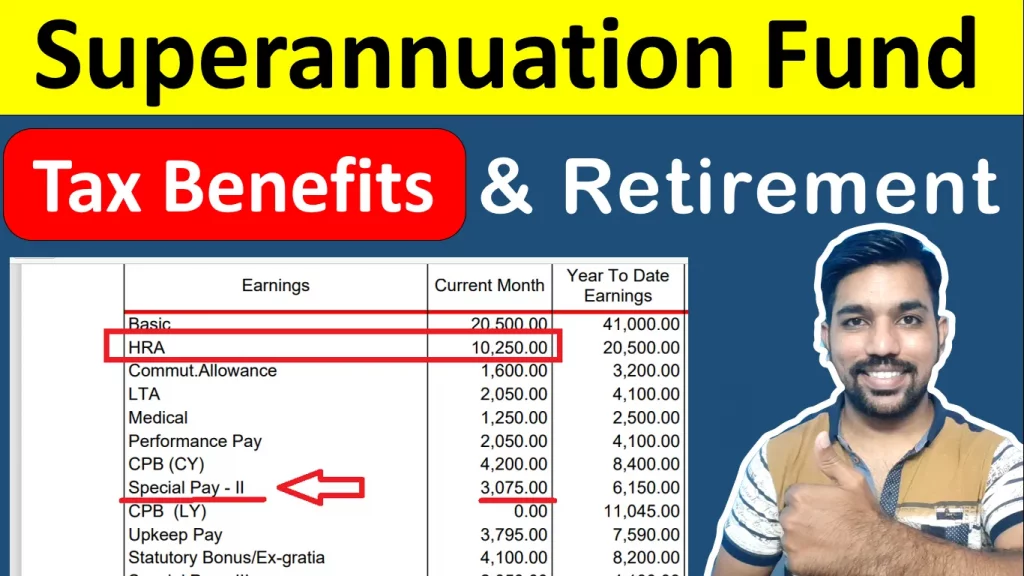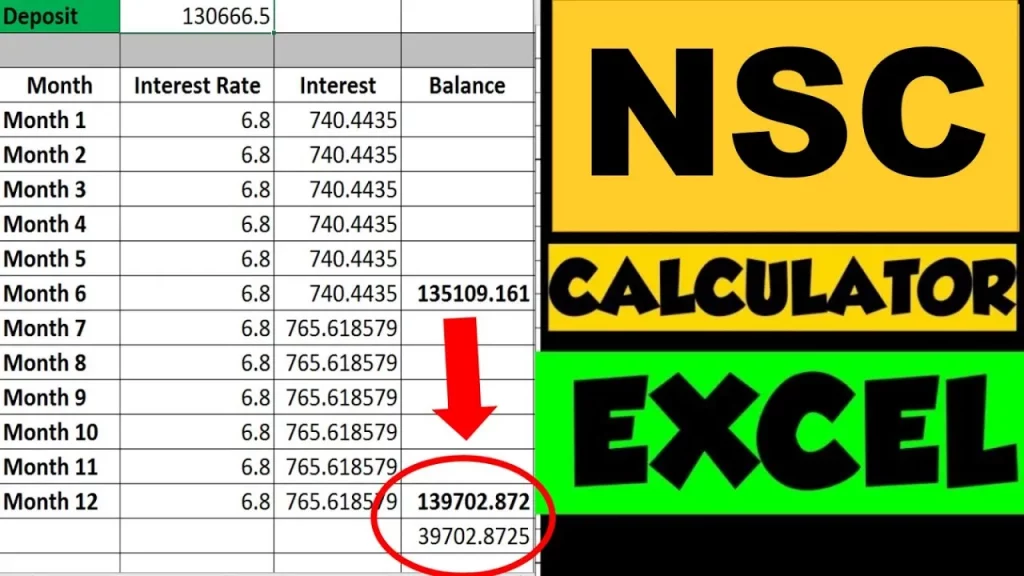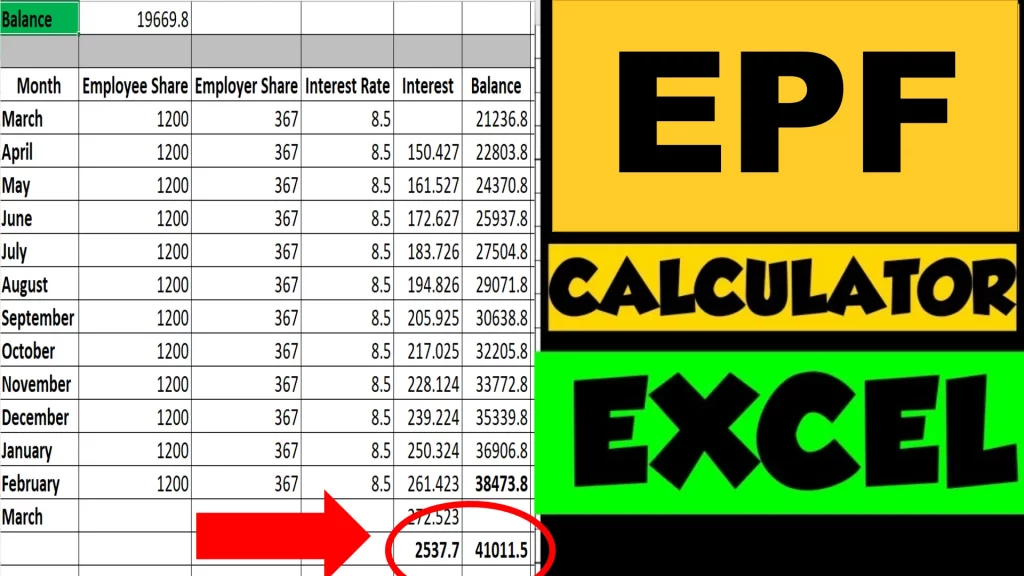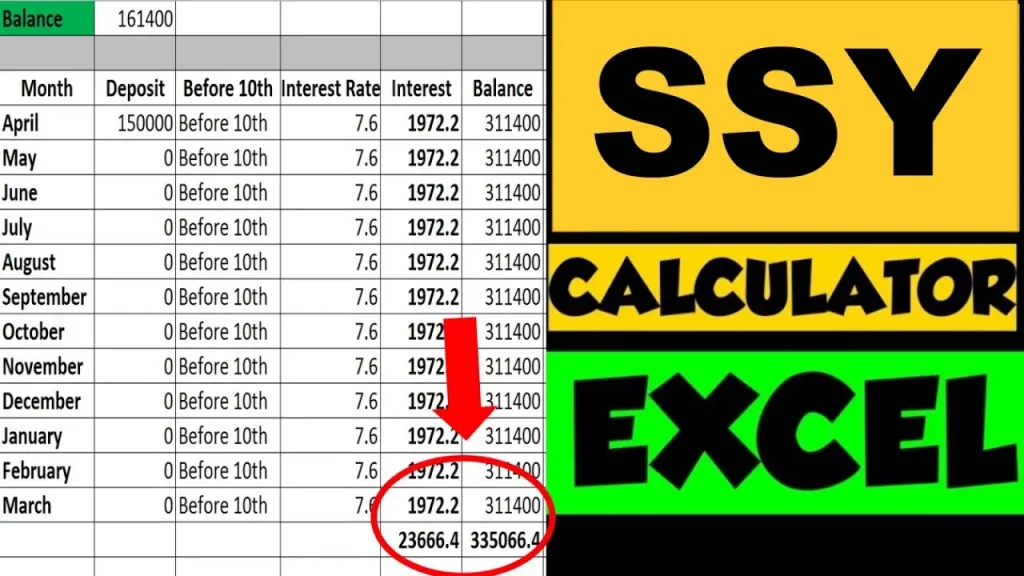If you are Salaried employee, you would have had the option to save via Superannuation Fund. But what is superannuation and how it works? Do you get interest, tax benefits and can you retire using this fund? Let us answer all these questions and understand this fund in more details.
Superannuation Fund is a type of pension fund which helps the employee to save for his or her retirement. The employer / company helps in contributing the amount in the fund from their side to save for your future. This helps to secure your retirement age apart from provident fund, public provident fund and other pension funds. The fund amount is part of your CTC (Cost to company). You also earn interests on the balance of your superannuation fund. This can help you in your retirement.
Let us now understand Superannuation Fund in more detail.
Superannuation Fund Explained in Hindi

Watch more Videos on YouTube Channel
Let us now understand this fund in more detail.
What is Superannuation Fund in Salary?
Superannuation Fund is a type of pension fund which helps the employee to save for his or her retirement.
The employer or company helps in contributing the amount in the fund from their side to save for your future. This helps to secure your retirement age apart from provident fund, PPF (Public Provident Fund) and other pension funds.
The fund amount is part of your CTC (Cost to company). So you can expect a deduction against superannuation fund in your monthly salary payslip.
When you switch jobs between companies, you can withdraw the amount in your superannuation fund. In case of retirement, you can take monthly pension using the funds you have accumulated in this fund.
Is Superannuation Fund mandatory?
Superannuation Fund is not mandatory and you have the option to take the fund amount to be credited as in hand salary every month.
You can use this fund to either invest in mutual funds or save for your own requirements. opting for Superannuation can help you to accumulate funds for your retirement.
How Superannuation Fund Works?
- 15% of Basic pay + DA (Dearness allowance) is considered to be contributed in this Fund by your company.
- The same is being contributed every month and accordingly the deduction is mentioned in your monthly payslip.

- As seen above, it is the example of payslip with superannuation fund credited in your monthly in hand salary and is not opted.
- Similarly, this amount (Rs. 3075) will be contributed in the fund in case you choose to
- Notice that the fund amount will be 15% of Basic Salary displayed. So 15% of Rs. 20,500 (Basic Salary) will be Rs. 3075. You can calculate the fund amount based on your monthly Basic Salary + DA
- The limit of contribution in this Fund is maximum Rs. 1.5 Lacs in financial year
- Amount exceeding this limit will be treated as perquisite in the hands of employee and will be taxable.
- The interest you earn in this Fund is tax free post retirement.
ALSO READ: Rs. 1000 PPF Interest Calculation for 15 Years
Meaning of Superannuation in Hindi
The word superannuate means “to retire“. And before retirement we need to have sufficient amount as balance in our account for retirement purpose and to meet our expenses while we enjoy free time.
That’s the reason this scheme is used – for retirement purpose to accumulate required funds for you.
Withdrawal from Superannuation Fund
After retirement, you have the option to withdraw 1/3 portion of the amount accumulated (Tax Free) and buy annuity with 2/3 portion of the remaining amount (non taxable). However, If you want to withdraw this 2/3 portion, it will be taxable in your hand.
This annuity plan will help you to get pension every month. If you withdraw the amount while switching or changing jobs, than the amount will be taxable.
You can also get the funds transferred from one employer to another while you change jobs for better pay.
Are superannuation and PF the same?
Superannuation and PF are similar to some extent, but not same. In Superannuation fund, the employer contributes on your behalf for your retirement purpose, where as PF or Provident Fund is contributed by you and employer both, based on 12% of Basic Salary + DA component in your salary slip.
Watch below video to understand EPF (Employee Provident Fund) Interest Calculation:
EPF (Employee Provident Fund) Interest Calculation

Watch more Videos on YouTube Channel
Income Tax Benefits
Superannuation fund allows you to claim deduction under Section 80C that can help you to save income tax with old tax regime. You get maximum of Rs. 1.5 Lacs as deduction under section 80C that can be used to save your income tax using superannuation fund.
However this deduction is not allowed with new tax regime.
Conclusion
While it is best to have Superannuation fund to earn interest and plan for your retirement, it is still optional.
You need not have to mandatorily use this fund in presence of your employee provident fund, PPF and other retirement funds including equities if you wish to take some risks via stock markets.
However get tax deduction with this fund and also the pension received is tax free, and these are some of the important benefits of superannuation fund.
Some more Reading
- Retirement Calculator in Excel Download
- Rs. 10,000 FD Interest Calculation for 10 Years
- Important Facts about Income Tax Calculation
Save Home Loan Interest Amount!
Use Home Loan Excel Calculator that will help you to Save Interest Amount on Home Loan EMI.
Click below button to download Home Loan EMI and Prepayment Calculator in Excel:
Watch how Home Loan Calculator in Excel Works
Income Tax Calculator App – FinCalC
For Income Tax Calculation on your mobile device, you can Download my Android App “FinCalC” which I have developed for you to make your income tax calculation easy.
What you can do with this mobile App?
- Calculate Income Tax for new FY 2024-25 and previous FY 2023-24
- Enter estimated Investments to check income tax with Old and New Tax Regime
- Save income tax details and track regularly
- Know how much to invest more to save income tax
- More calculators including PPF, SIP returns, Savings account interest and lot more
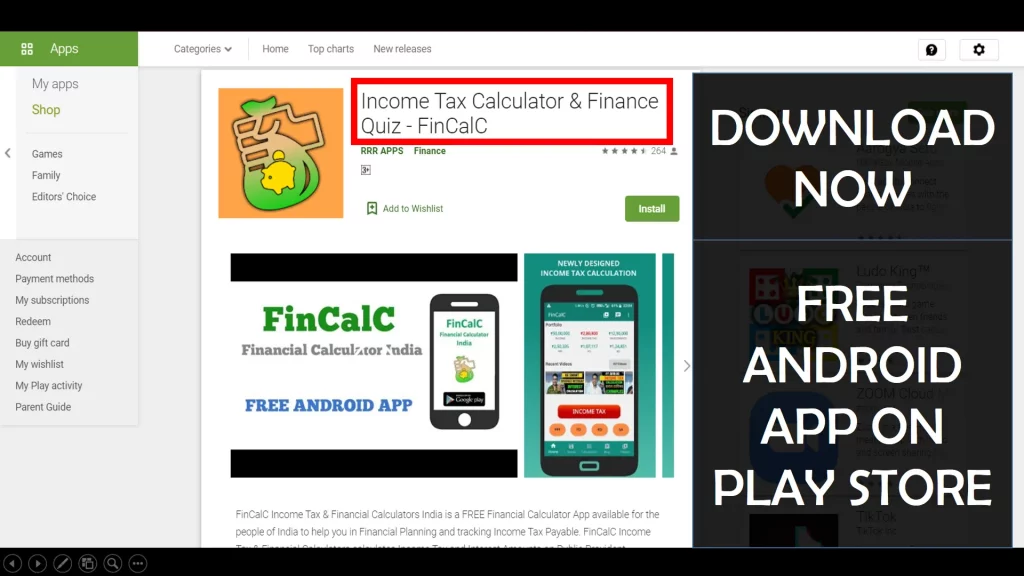
Use Popular Calculators:
- Income Tax Calculator
- Home Loan EMI Calculator
- SIP Calculator
- PPF Calculator
- HRA Calculator
- Step up SIP Calculator
- Savings Account Interest Calculator
- Lump sum Calculator
- FD Calculator
- RD Calculator
- Car Loan EMI Calculator
- Bike Loan EMI Calculator
- Sukanya Samriddhi Calculator
- Provident Fund Calculator
- Senior Citizen Savings Calculator
- NSC Calculator
- Monthly Income Scheme Calculator
- Mahila Samman Savings Calculator
- Systematic Withdrawal Calculator
- CAGR Calculator
I’d love to hear from you if you have any queries about Personal Finance and Money Management.
JOIN Telegram Group and stay updated with latest Personal Finance News and Topics.
Download our Free Android App – FinCalC to Calculate Income Tax and Interest on various small Saving Schemes in India including PPF, NSC, SIP and lot more.
Follow the Blog and Subscribe to YouTube Channel to stay updated about Personal Finance and Money Management topics.

